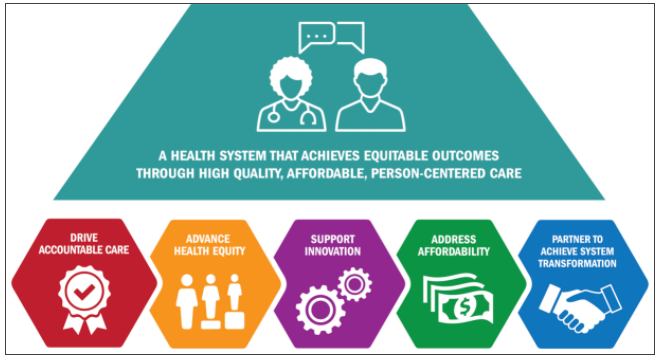 In politics and professional life, achieving success requires the ability to resolve conflicts. I’ve noticed that conflicts often become entrenched because the opposing parties both simplify the conflict in black and white terms. They conceptualize their own interest as moving in one direction. And, they conceptualize their opponent as wanting to move in the opposite, wrong direction. As a result, the argument between the parties generates no light, only heat. Each side only acknowledges the advantages of their direction and the disadvantages of the opposing direction. Neither side seeks to really understand and learn from the arguments offered by the other side.
In politics and professional life, achieving success requires the ability to resolve conflicts. I’ve noticed that conflicts often become entrenched because the opposing parties both simplify the conflict in black and white terms. They conceptualize their own interest as moving in one direction. And, they conceptualize their opponent as wanting to move in the opposite, wrong direction. As a result, the argument between the parties generates no light, only heat. Each side only acknowledges the advantages of their direction and the disadvantages of the opposing direction. Neither side seeks to really understand and learn from the arguments offered by the other side.
When I’ve had the opportunity to mediate such conflicts, I almost always used the same strategies.
- Step One. I try to move both parties to some common ground, moving back to some basic statement that seemingly nobody could disagree with. This generates a tiny bit of agreement momentum.
- Step Two. Apply the momentum generated in step one to getting the parties to agree that, if you took each party’s position to an extreme, the result would be undesirable. The parties are inherently agreeing to re-conceptualize the disagreement from being a choice between polar opposite positions to an optimization problem. The idea is to choose an agreeable value on some spectrum between undesirable extremes. If the parties make this leap, we are half way to sustainable agreement.

- Step Three. Get the parties to agree to avoid talking about the answer, and focus on reaching consensus on the factors and assumptions that influence the selection of the optimal answer. Sometimes, this can be done subjectively, simply listing the factors. Other times, it is worthwhile to get quantitative, working together on assumptions and calculations to estimate the magnitude and uncertainty of the outcomes at various points along the spectrum of alternative answers. This quantitative approach has been described as the “explicit method,” and an example of applying it to resolve fierce disagreements about mammography guidelines is described in an earlier post.
- Step Four. Finally, ask the parties to apply their values to propose and explain an optimum answer, from their point of view. In this step, the important point is to insist that the parties acknowledge that they are no longer arguing about facts or assumptions, since consensus has already been achieved on those. If not, then go back to step three. The objective is to untangle and separate factual, logical, scientific debates from the discussion of differences in values. If those remain tangled up, the parties inevitably resort to talking at each other, rather than engaging in productive dialog.
- Step Five. Try to achieve a compromise answer. In my experience, if you’ve really completed steps 1-3, this ends up being fairly easy.
- Step Six. Work to sustain the compromise. Celebrating the agreement, praising the participants for the difficult work of compromise, documenting the process and assumptions, and appealing to people to not disown their participation in the process are all part of this ongoing work. Passive aggressiveness is the standard operating model in many settings, part of the culture of many organizations. And, it is a very difficult habit to break.
Of course, in the routine work of mediating conflicts, I don’t really explicitly go through these six steps. This conflict resolution approach is in the back of my mind. They are really more like habits than steps.
Sometimes this approach works. Sometimes, it does not. It can break at any step.
Notice that break downs in most of the steps are basically people issues. People won’t change their conceptualization. They are unwilling to make their assumptions explicit. They are unwilling to acknowledge differences in values. They are unwilling to compromise.
But, sometimes, the process breaks because of the nature of the issue being debated. Sometimes, conceptualizing the debate as an optimization problem between two undesirable extremes fails because there are really not good choices along the spectrum.
For example, when debating the design of a program or policy, I have often encountered a no-win trade-off between keeping it simple vs. addressing each party’s unique circumstances. If I keep it too simple, people complain that it as a “hammer,” failing to deal with their circumstances. If I add complexity to deal with all the circumstances, people complain that it is a maze or a contraption. If I select some middle level of complexity, the complaints are even worse because the pain of complexity kicks in before the value of complexity is achieved.
I’ve seen this no-way-to-win scenario in my own work, in the design of information systems, wellness and care management protocols, practice guidelines and protocols, analytic models, organizational structures, governance processes, contractual terms, and provider incentive programs. And, I’ve seen this scenario in many public policy debates, such as debates about tax policy, tariffs, banking regulations, immigration, education, and health care reform. In cases when the extremes are more desirable than the middle ground, the only approach I can think of is to bundle multiple issues together so that one party wins some and the other party wins others, to facilitate compromise.


















3 thoughts on “To resolve conflicts, re-frame polar positions as optimization between undesirable extremes. But, sometimes there is no way to win.”
What if the conflict involves two sides arguing to achieve the same outcome for only themselves? I like your ideas for conflicts involving opposition. I’m sure Ross is somewhere in CA applying similar principals as we speak. I would be curious to see how similar/if your methods would help.
You bring up an excellent point. When the parties conceptualize the issue as a zero sum game, like splitting up a pie, they won’t get agreement on an optimal point. In such cases, I would try to re-conceptualize the undesirable extremes as “keep arguing forever in hopes of getting more for yourself” vs. “give it away to the other guy immediately to get done with the unpleasant negotiation.” In zero sum games, the parties always seem to seek natural deadlines that allow both parties to feel enough urgency to be willing to compromise. If there is no natural deadline, zero sum negotiations seem to go on forever. As a facilitator, in such situations I would just focus on creating a sense of urgency.
Pingback: Reward Health Sciences | How government surveillance of internet data relates to health care privacy and big data